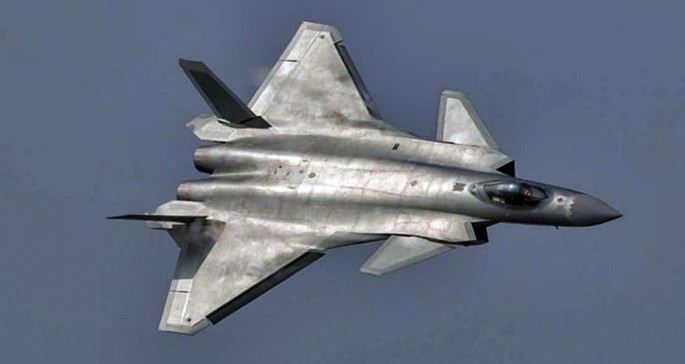Western military analysts have confirmed the role of China's Chengdu J-20 is to destroy soft aerial targets such as the Boeing KC-135 Stratotanker refueling aircraft of the U.S. Air Force and to run away from the Lockheed Martin F-35 Joint Strike Fighter against which it doesn't have a chance in air-to-air combat.
While hyped by China as a fifth generation stealth fighter comparable to the F-35, the J-20 in reality is only a low-observable aircraft with a few stealth-like qualities. In addition, the J-20 is a huge aircraft compared to the F-35, a characteristic that indicates it being designed for long-range missions such as shooting down aerial tankers.
"The J-20 ... is different than the F-22 in the context that, if you take a look and analyze the design, it may have some significant low-observable capabilities on the front end, but not all aspects -- nor is it built as a dogfighter," said retired U.S. Air Force Lt. Gen. David Deptula.
"But quite frankly, the biggest concern is its design to carry long-range weapons."
The J-20 is a "fundamentally different sort of aircraft than the F-35," said Malcolm Davis, a senior analyst at the Australia Strategic Policy Institute.
He said the J-20 is "high-speed, long-range, not quite as stealthy (as U.S. stealth aircraft), but (the Chinese) clearly don't see that as important."
The J-20 is "not a fighter, but an interceptor and a strike aircraft" that doesn't seek to combat U.S. jets in air-to-air battles.
Instead, "the Chinese are recognizing they can attack critical airborne support systems like AWACS (airborne early warning and control systems) and refueling planes so they can't do their job," said Davis.
"If you can force the tankers back, then the F-35s and other platforms aren't sufficient because they can't reach their target."
The J-20, which made its first flight only in 2011, was never intended as an air superiority fighter armed with the stealth and advanced electronics that will allow it to prevail against its two premier antagonists: the F-35 and the Lockheed Martin F-22 Raptor.
In Asia, however, the J-20 will see battle against the F-35, a squadron of which is already operational in Japan with the United States Marines.
The J-20's huge size (20 meters long with a wingspan of 13 meters) means it can carry more fuel for longer range patrols. It also means it's less stealthy since this massiveness compared to the F-35 (which is five meters shorter in length) will reveal it faster to an F-35.
More tellingly, the J-20's design is what called "forward stealth," meaning the J-20 is only truly stealthy when seen by radar head-on. From the side, the rear and because of its larger size, the J-20 has a radar cross section that's not that of a stealth aircraft.
Some analysts feel the J-20 is more accurately described as a "low observable" (LO) aircraft instead of a true stealth aircraft because of its many design deficits. These include its forward stealth design and its use of canards that sacrifice stealth.
An American analyst believes the J-20's combination of forward stealth and long range is more of a danger to the U.S. Navy than the U.S. Air Force. The jet's long-range maritime strike capability should also concern the U.S. military more that its capability as an air-superiority fighter.



























